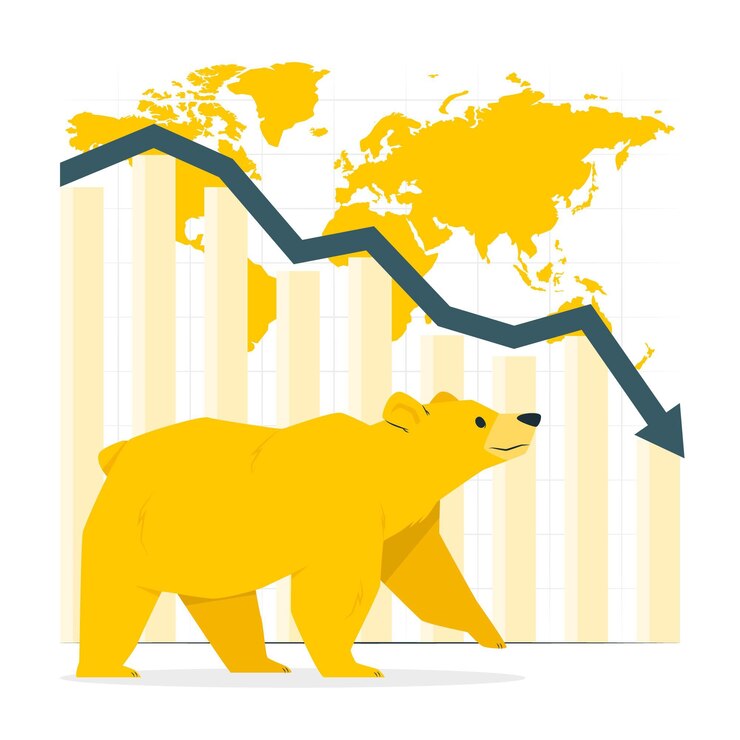
In this post, we will discuss-
Introduction
Having a good understanding of the stock market is crucial for anyone looking to invest their money.
One of the most important things to understand is the difference between bear and bull markets, which have different ebbs and flows.
In this detailed blog post, we will explore the fundamental differences between these two market conditions and how investors can effectively identify and respond to them.
This knowledge is essential for investors who want to protect their portfolios and make the most of market opportunities.
Therefore, it is essential for anyone seeking success in the world of investing to gain an in-depth understanding of bear and bull markets
Definition of Bear and Bull Markets
A bear market is an extended period, which can last from months to years, during which stock prices fall by at least 20% from their previous highs.
During a bear market, investors are more likely to be depressed and expect greater drops.
A bull market, on the other hand, is defined by a continuous upward trend in stock values, which typically rise by at least 20% from previous lows.
In the time of a bull market, investors are confident about the future growth.
Importance of Understanding Market Trends
Learning about bear and bull markets is essential for those who want to understand the stock market properly.
Understanding these trends helps you to adapt their strategy, minimise risk, and capitalise on opportunities.
Understanding market patterns helps you to make informed decisions about when to buy, sell, or retain investments, resulting in higher returns and lower losses.
Bear and bull markets are opposite movements in the stock market,
with bear markets characterised by falling prices and negativity and bull markets by rising prices and confidence.
Clarifying the differences between these market conditions helps you to adjust strategies and make smart decisions based on current market sentiment.
Understanding Bear Markets

Definition and Characteristics
A bear market is an extended period of falling stock prices, which can be caused by widespread investor fear.
During a bear market, investor confidence decreases, causing increased selling pressure.
Bear markets are usually caused by economic downturns, financial crises, or geopolitical tensions.
Negative news events and negative economic data may increase investor fears and drive market downturns.
Causes of Bear Markets
Bear markets can be caused by a variety of events, such as economic downturns, losses in business earnings, rising interest rates, or geopolitical instability.
Negative sentiment can also be fueled by factors such as regulatory changes, trade disputes, or natural disasters.
Understanding the root causes of bear markets can help you forecast market moves, recognize potential risks, and change your investing strategy properly.
Impact on Investors and the Economy
Bear markets can have serious consequences for investors, including portfolio losses, decreased wealth, and higher levels of financial stress.
A bear market may result in severe decreases in retirement savings, investment portfolios, and other assets.
Bear markets can have an impact on the economy as a whole,
reducing consumer spending, company investment, and overall growth.
Long periods of market collapse can lead to job losses, bankruptcies, and financial instability.
Understanding Bull Markets

Definition and Characteristics
A bull market is defined by a continuous rise in stock prices,
which is usually fueled by good economic indicators and investor optimism.
Bull markets are characterized by high investor confidence, resulting in greater buying activity and price momentum.
Bull markets are frequently connected with periods of economic growth, low unemployment, and high corporate earnings.
Positive news events, such as technology advances, company mergers, or government stimulus, can boost confidence and boost market performance.
Factors Driving Bull Markets
Bull markets can be caused by a variety of reasons, including favourable economic conditions, supportive monetary policy, and positive investor mood.
Economic indicators such as GDP growth, consumer spending, and business investment can provide information about the economy’s health and future market trends.
Technological developments, business innovation, and global trade agreements can all contribute to bullish market sentiment,
raising stock values and providing opportunities for investors to profit.
Opportunities and Risks
Bull markets allow you to improve your wealth through rising stock prices.
During bull markets, you must take caution because overconfidence and speculation may lead to overvaluation and increased volatility.
You must maintain discipline, diversify your portfolios, and avoid chasing hot stocks or market trends during bull markets.
Sticking to a well-defined investing strategy and focusing on long-term goals will help you go through bull markets and achieve financial success.
Key Differences Between Bear and Bull Markets
| Aspect | Bull Market | Bear Market |
|---|---|---|
| Market Direction | Upward trend in stock prices | Downward trend in stock prices |
| Investor Sentiment | Optimistic | Pessimistic |
| Economic Indicators | Strong economic growth, low unemployment | Economic contraction, high unemployment |
| Market Performance | Rising stock prices, increased buying activity | Falling stock prices, increased selling pressure |
| Investor Behavior | Confidence in market prospects, willingness to invest | Fear of losses, tendency to sell assets |
| Investment Strategies | Focus on growth stocks, risk tolerance | Defensive positions, risk aversion |
| Economic Impact | Stimulates consumer spending, business investment | Decreases consumer confidence, slows investment |
| Psychological Factors | Greed, enthusiasm, positive sentiment | Fear, uncertainty, negative sentiment |
Investor Sentiment: Optimism vs. Pessimism

Investor sentiment plays a crucial role in driving market trends,
with bear markets fueled by fear, uncertainty, and pessimism, while bull markets are driven by confidence, optimism, and greed.
Sentiment indicators, such as surveys, sentiment indexes, and investor behaviour, can provide insights into market sentiment and help investors
Conclusion
Understanding the subtleties of bear and bull markets is essential for you to succeed in the dynamic landscape of the stock market.
You can confidently and effectively manage market cycles by understanding the indicators of each market environment and adapting your strategy appropriately.
Whether it’s taking precautions in a bear market or capturing growth opportunities in a bull market,
the ability to know the difference between these market movements is a valuable asset for you to reach your financial objectives.
More than 4,00,000+ Indians trust us

